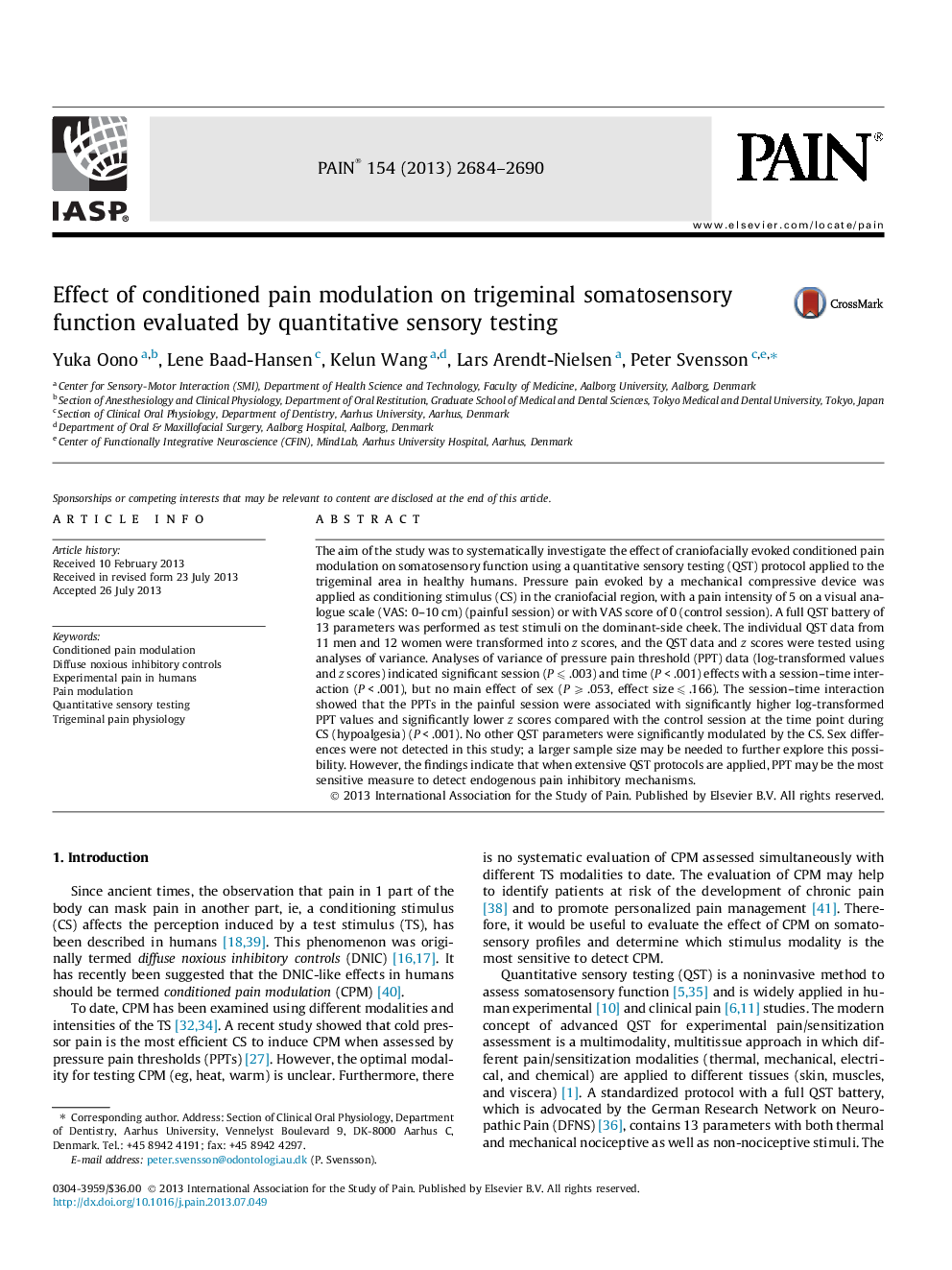| کد مقاله | کد نشریه | سال انتشار | مقاله انگلیسی | نسخه تمام متن |
|---|---|---|---|---|
| 10450047 | 918344 | 2013 | 7 صفحه PDF | دانلود رایگان |
عنوان انگلیسی مقاله ISI
Effect of conditioned pain modulation on trigeminal somatosensory function evaluated by quantitative sensory testing
ترجمه فارسی عنوان
اثر مدولاسیون درد ناشی از اختلال بر عملکرد تیرومینال سموتوسنسورس با استفاده از تست حسیتی کمی اندازهگیری شد
دانلود مقاله + سفارش ترجمه
دانلود مقاله ISI انگلیسی
رایگان برای ایرانیان
کلمات کلیدی
مدولاسیون درد مداوم، کنترلهای بازدارندهای مضر، درد تجربی در انسان، مدولاسیون درد، آزمون حسی کمی فیزیولوژی درد تیجیکال،
موضوعات مرتبط
علوم زیستی و بیوفناوری
علم عصب شناسی
علوم اعصاب سلولی و مولکولی
چکیده انگلیسی
The aim of the study was to systematically investigate the effect of craniofacially evoked conditioned pain modulation on somatosensory function using a quantitative sensory testing (QST) protocol applied to the trigeminal area in healthy humans. Pressure pain evoked by a mechanical compressive device was applied as conditioning stimulus (CS) in the craniofacial region, with a pain intensity of 5 on a visual analogue scale (VAS: 0-10 cm) (painful session) or with VAS score of 0 (control session). A full QST battery of 13 parameters was performed as test stimuli on the dominant-side cheek. The individual QST data from 11 men and 12 women were transformed into z scores, and the QST data and z scores were tested using analyses of variance. Analyses of variance of pressure pain threshold (PPT) data (log-transformed values and z scores) indicated significant session (P ⩽ .003) and time (P < .001) effects with a session-time interaction (P < .001), but no main effect of sex (P ⩾ .053, effect size ⩽ .166). The session-time interaction showed that the PPTs in the painful session were associated with significantly higher log-transformed PPT values and significantly lower z scores compared with the control session at the time point during CS (hypoalgesia) (P < .001). No other QST parameters were significantly modulated by the CS. Sex differences were not detected in this study; a larger sample size may be needed to further explore this possibility. However, the findings indicate that when extensive QST protocols are applied, PPT may be the most sensitive measure to detect endogenous pain inhibitory mechanisms.
ناشر
Database: Elsevier - ScienceDirect (ساینس دایرکت)
Journal: PAIN® - Volume 154, Issue 12, December 2013, Pages 2684-2690
Journal: PAIN® - Volume 154, Issue 12, December 2013, Pages 2684-2690
نویسندگان
Yuka Oono, Lene Baad-Hansen, Kelun Wang, Lars Arendt-Nielsen, Peter Svensson,
